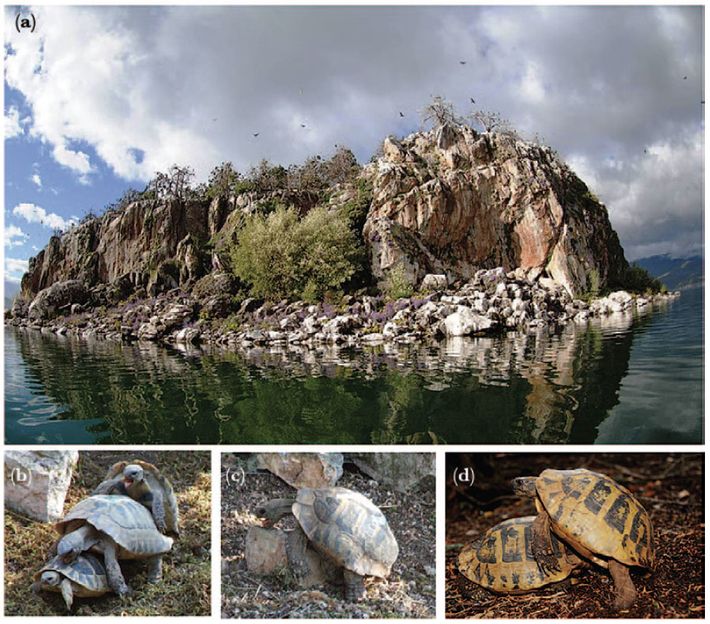
Scientists have long been interested in the relatively high frequency of same-sex behavior in some animal species because it doesn’t appear, at least at first glance, to be “adaptive.” Why would you waste the precious calories necessary to find and mate with another animal of the same sex when that coupling isn’t even going to lead to offspring — the reason sex occurs “in the wild” in the first place? (Suffice it to say that things are a lot more with complicated with humans, and it can be perilous to make direct comparisons between us and other species on this front.)
Researchers have suggested different answers for different species, and the most recent insights, from a new article in Behavioral Ecology, come from the almost terrifyingly sexy world of tortoises. A team led by Xavier Bonnet of the Center of Biological Studies in France wrote about the seven years they spent monitoring Hermann’s tortoises on Golem Grad Island, which sits in a Macedonian lake.
Golem Grad isn’t just any island; it has a couple of features that make it a prime natural laboratory for learning about same-sex behavior in the wild. For one thing, the dense tortoise population is heavily male — researchers think it has something to do with “a scarcity of potential nest sites that provide daughter-producing temperatures.” For another, the island’s unusual landscape effectively splits the tortoise population in two — one inhabiting the island’s plateau, the other the shoreline — with only a tiny proportion of tortoises mixing between the two groups. The plateau population is even more male (95 percent among adults) than the shoreline population (77 percent), which allowed the researchers to compare differences in same-sex behavior between two otherwise similar groups.
And there was a pretty big difference. Specifically, the plateau population engaged in way more same-sex behavior — 74 percent of the sexual encounters the researchers recorded among that group were same-sex, as compared to just a third for the shoreline group. The Golem Grad tortoises also got into some pretty kinky stuff: they “were observed mounting juveniles, dead males, and tortoise skeletons (empty shells of males),” and “two were seen attempting to copulate with stones that vaguely resembled a tortoise.” All these behaviors were more common on the (almost) no-girls-allowed plateau.

What to make of this? The researchers think there’s a two-part (partial) answer here: When the male tortoises got sexually excited, couldn’t find a female, and needed an outlet, they were less discerning, and there’s been no good evolutionary reason to “correct” this behavior.
In other words, from an evolutionary perspective, it’s useful for sexually aroused male tortoises to be aggressively trying to copulate with anything that looks like a female tortoise, because generally speaking the end result will be, well, copulation with a female tortoise who will, if all goes well, end up laying some eggs. And in situations where there aren’t a lot of females around anyway, there’s no real downside to them messing around with other males (or with, erm, rocks or tortoise skeletons). In theory, over time the males could have evolved mechanisms that would have made them more discriminating, but the researchers “speculate that the development, maintenance, and functioning of specific neuroendocrine structures that selectively filter our [same-sex behavior] might be too expensive (and useless) in male tortoises.”
So there you have it: Cut a male tortoise off from lady tortoises, and he may well dabble in heteroflexibility. Not that there’s anything wrong with that!




